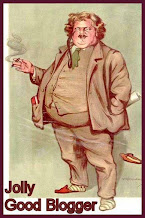What is this “swerve” all about and how did it make the world modern? As it turns out, one of the big problems with this book is that the second part of this question is never sufficiently addressed. At its core, The Swerve tells the story of the Renaissance humanist Poggio Bracciolini (1380-1459), who, in 1417 visited the libraries of several Southern German monasteries on a hunt for “lost” texts from classical antiquity. One of the manuscripts he happened upon during this book-hunt contained Lucretius's [DRN - De Rerum Natura], which was soon re-copied multiple times and caused a sensation among the reading public of the Italian Renaissance. Greenblatt makes no bones about the fact that he himself regards the Epicurean philosophy of radical materialism combined with unapologetic hedonism that is encoded in DNR [sic] as the best thing since sliced bread and one of the defining sources of our modern way of thinking.Nå kan man si mye om hvordan og hvorfor moderniteten vokste fram, for ikke å si renessansen - siden nå den engelske utgaven har den noe mer ydmyke, men mindre presise tittelen The Swerve: How the Renaissance Began - men Greenblatts bok gir altså ikke svaret på noen av delene.
Ved siden av et varmt forsvar for verdien av å se verden som en verditom maskin, får vi altså et oppgulp av alle mytene om middelalderens mørke, at Bruno ble brent for sin naturvitenskap, at kirken ødela antikkens lærdom og ikke minst biblioteket i Aleksandria, for ikke å si myrdet Hypatia i sin kamp mot kvinner og kunnskap.While the assertion that the re-discovery of Epicureanism is at the sole root of modern science and philosophy is certainly dubious, it at least makes some chronological sense. By contrast, to declare DNR the source of Renaissance humanism puts the cart entirely before the horse. The very fact that Poggio Bracciolini discovered DNR on a book tour through Germany, undertaken to satisfy the ever-growing desire of Italian courts and scholars for ancient texts, should alert us to the fact that Poggio and his discovery were products of the Renaissance and not its cause.
For å nevne noe.
Man kunne altså vente at The Swerve ikke bare ble assosiert med kultarkeologen i Da Vinci-koden og Hellig Blod, Hellig Gral, men fikk såpass mange kritikere til å si fra at den kunne være til skrekk og advarsel for andre som vil skrive om modernitetens fremvekst.






















Ingen kommentarer :
Legg inn en kommentar